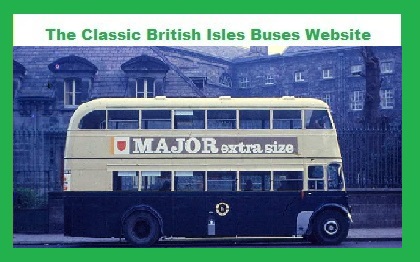

The Classic British Isles Buses Website
Coras Iompair Eireann advert brochure 1957 (by Shane Conway)
Page last updated on 2 January 2025
Email Events diary Past events list Classified adverts Classic U.K. Buses Classic Irish Buses Classic Manx Buses
| 1945-1950 | 1951-1955 | 1956-1961 | 1962-1966 | 1967-1970 | 1971-1981 | CIE adverts 1957 | Bombardiers (KC, KD, KE, KR and KW) |
CIE was formed in 1945 by the merger of the Great Southern Railways and Dublin United Transport Company, and thus had control of most of the land based transport in the Republic of Ireland, including railways, trams, buses, lorries and horse drawn freight delivery vehicles in urban areas. Alongside that core business, the company also had its own hotels, and water based transport in the form of canal barges and ferries to the Aran Islands off the Galway coast.
Both of the previous operators had long realised the extra revenue which could be obtained from advertising on buses, trams and static sites at stations and elsewhere. CIE continued this practice and set up an offshoot business to promote the various advertising options. Known as Transport Subsidiary Ltd., it was based at the head office in 59 Upper O'Connell Street in the centre of Dublin. This page looks at the various options offered in a brochure dated July 1957, a period of time before Ireland had its own native television service (that didn't start till New Year's Eve 1961). Colour adverts in newspapers would have been unheard of back then too. So TSL were in a position to offer colour adverts on various parts of buses, inside and outside, as well as railway station platforms, bridges and large roadside advert boards.
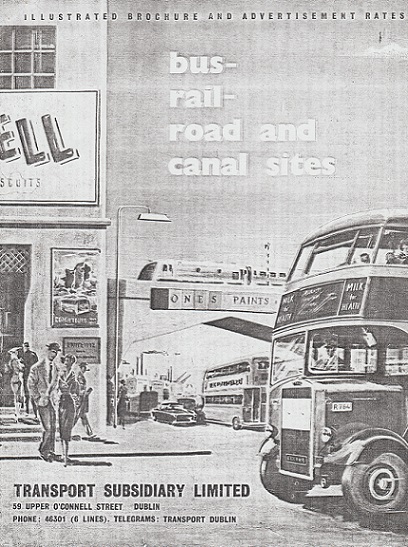
This was the cover of the brochure, featuring artwork including a bus masquerading as Leyland OPD2 R764 (which wasn't even in existance at that time -- it entered service in October 1957), a silver painted diesel train on the bridge, which seems to be about to enter the building on the left! Notice that there is a CIE tours poster on the wall of the building in question. There isn't (and I don't think ever was) any railway bridge in Dublin that looked like the one portrayed here. I'm also not sure what the other bus is supposed to be either. But as an artist's interpretation, I suppose it looks passable.
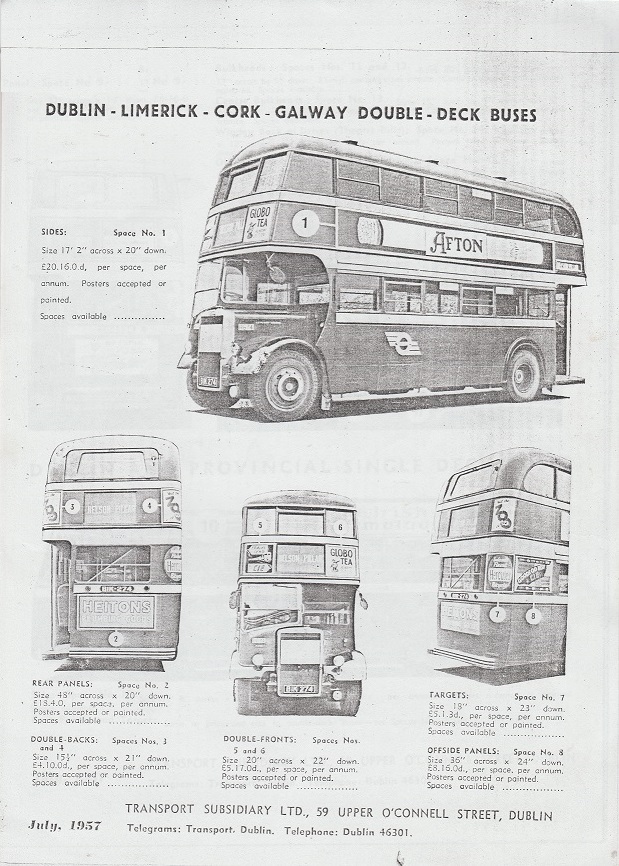
To illustrate the various options available, real buses were wisely used. Here we see R674 which was a year old at the time. It started its working life in Ringsend garage, moved to Drogheda in late 1967, and on to Cork in January 1972 for its final years. Advert options 1 to 8 were all exterior displays on double deck buses. Option 1 of course was also available on the offside of the vehicle. The ones either side of the destination screens were often a matched pair for the same advertiser, but this wasn't always the case as seen on the front of R674 here. Tobacco (and alcohol) adverts were frequently seen then, a situation which is now confined to the history books due to modern health legislation. The yearly rate quoted for option 1 of £20 and 16 shillings (£20.80) converts to 26.41 in Euro currency, just over 50 cent a week.
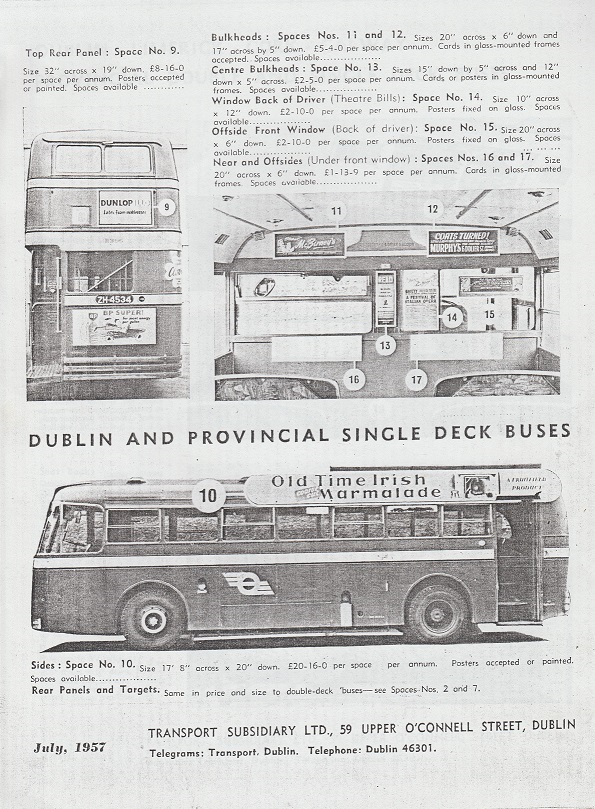
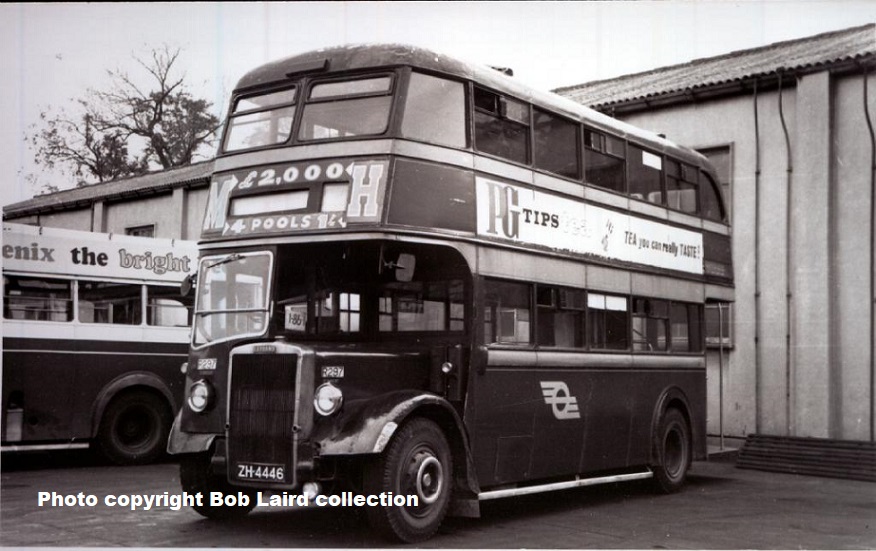
ZH 4534 (sister bus ZH 4538 is now preserved) was one of 100 Leyland bodied buses bought in 1948/49, which had a different destination arrangement as seen here. So these were the only buses in the fleet where option 9 was available, as well as 1, 2, 7 and 8. The front destination also needed a special advert layout, not listed in the brochure, but illustrated above. Option 10 was intended for either side of single deck buses, which had these advert boards bolted on to the rear end of the bus, this one being one of the 38 Leyland Royal Tigers bought new. A small cut out was made for the doorway, where these were at the rear. Older halfcabs were forward entrance. It was known for boards to be removed and replaced with freshly painted ones for a different product, occasionally a cut away one was seen on front entrance buses, or on the offside of some buses. Single deckers also offered options 2 and 7, as per the Titans. Note that adverts were never applied below the lower side windows on any buses. A further seven advert spaces were also available on the front bulkheads of double deckers, as depicted here.
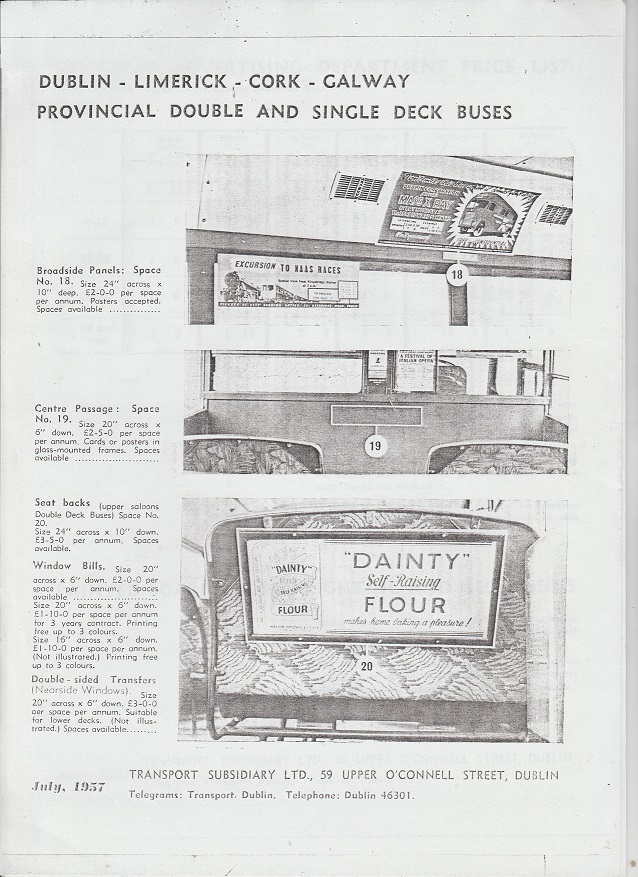
Half cab buses on routes from Dublin, or in other areas, omitted slots 16 and 17 in favour of one centrally located board (19). Possibly this was intended for the older front door buses, although the one depicted here seems to be a rear entrance example. Number 20 was on the rearmost offside upper deck seat, and in this instance promotes Walter Brown and Co.'s Dainty flour!! Brown's were a flour miller located at Creighton Street in Dublin 2. Finally, customers also had the option of window bills or double sided transfers, with free printing for up to three colours, or adverts placed on the panels above the windows.
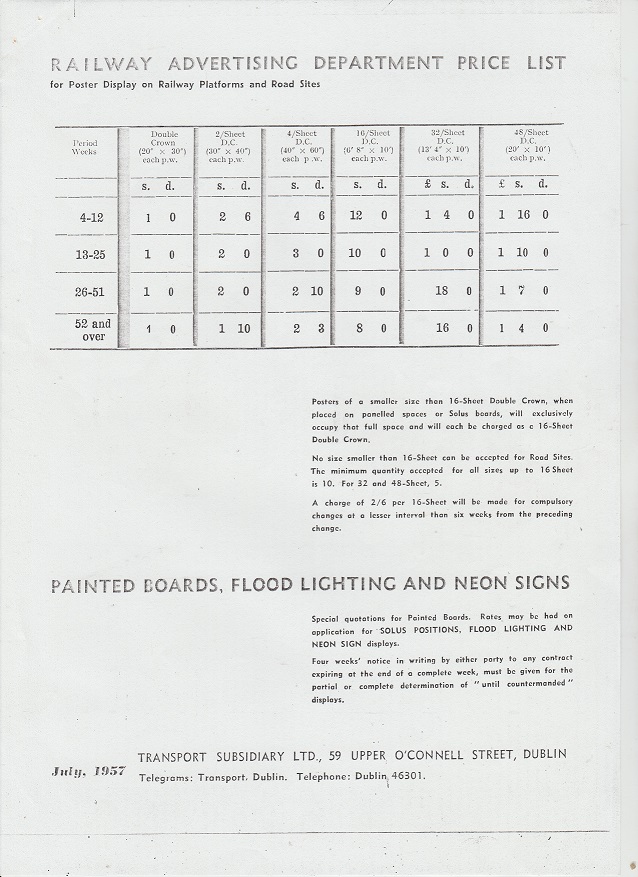
Next we have the rates for station and sign board poster adverts, ranging from a shilling per week up to £1 and 16 shillings. Larger displays were available at a discount for longer advertising times, for example the £1 16s dropping to £1 4s if it was left for a full year. Ironically, within a few years many of these station platform sites would become unavailable as various stations and indeed entire lines were closed down to be replaced by road transport services.
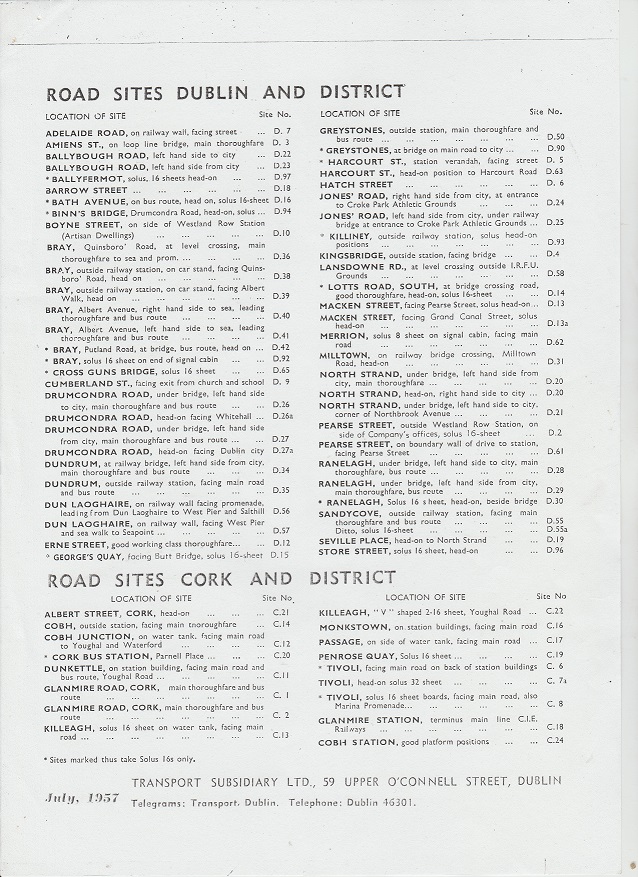
Quite a number of roadside sites were also available in Dublin and Cork as seen in the above list. Those listed for Harcourt Street Station, Milltown, Ranelagh and Dundrum were destined to disappear in 1960/61 when the railway line they were part of closed down, and the bridges in question being removed. The same line was (much) later converted to a tramway route, which of course meant all those missing bridges had to be replaced with new structures, the re-opening took place in 2004.
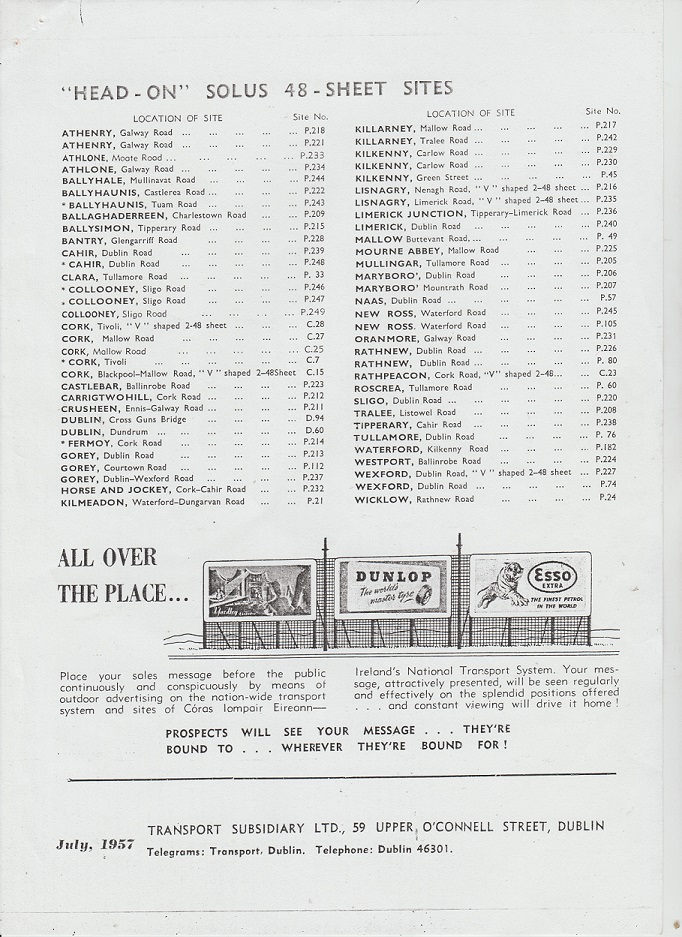
The brochure ends with a list of locations of the large roadside advert hoardings, the prices for which are listed further up this page. While the advent of television could have been a possible competititor for advertising revenue, it should be noted that today bus and roadside adverts are still very much to the fore. The advent of bus shelters and allover advert buses provided further opportunities for advertising in what is today a multi million pound/euro/dollar industry. Further evidence of this can be seen in the use of trains, trams and taxis for advertising, and also on such mundane things as litter bins!
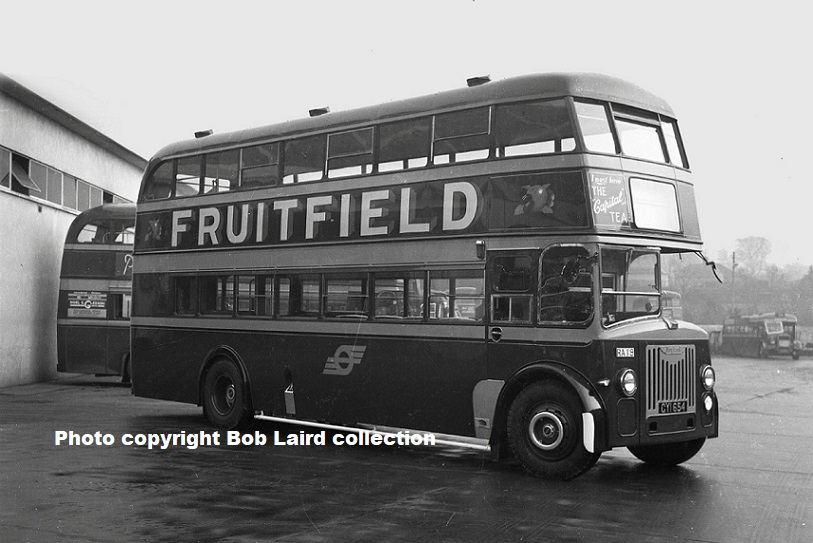
Finally, a quick look at one of the most iconic adverts seen on various CIE buses over the years, and one of my particular favourites. The FRUITFIELD advert was applied to (at the last count) no less than 49 vehicles, six of which had it re-applied when they were repainted from green to blue and cream. It was on 22 R class OPD2s, twelve RA class PD3s, two Atlanteans as well as thirteen single deckers. Three preserved Titans also have had it included as part of their restoration.
Email
Events diary
Past events list
Classified adverts
Classic U.K. Buses
Classic Irish Buses
Classic Manx Buses